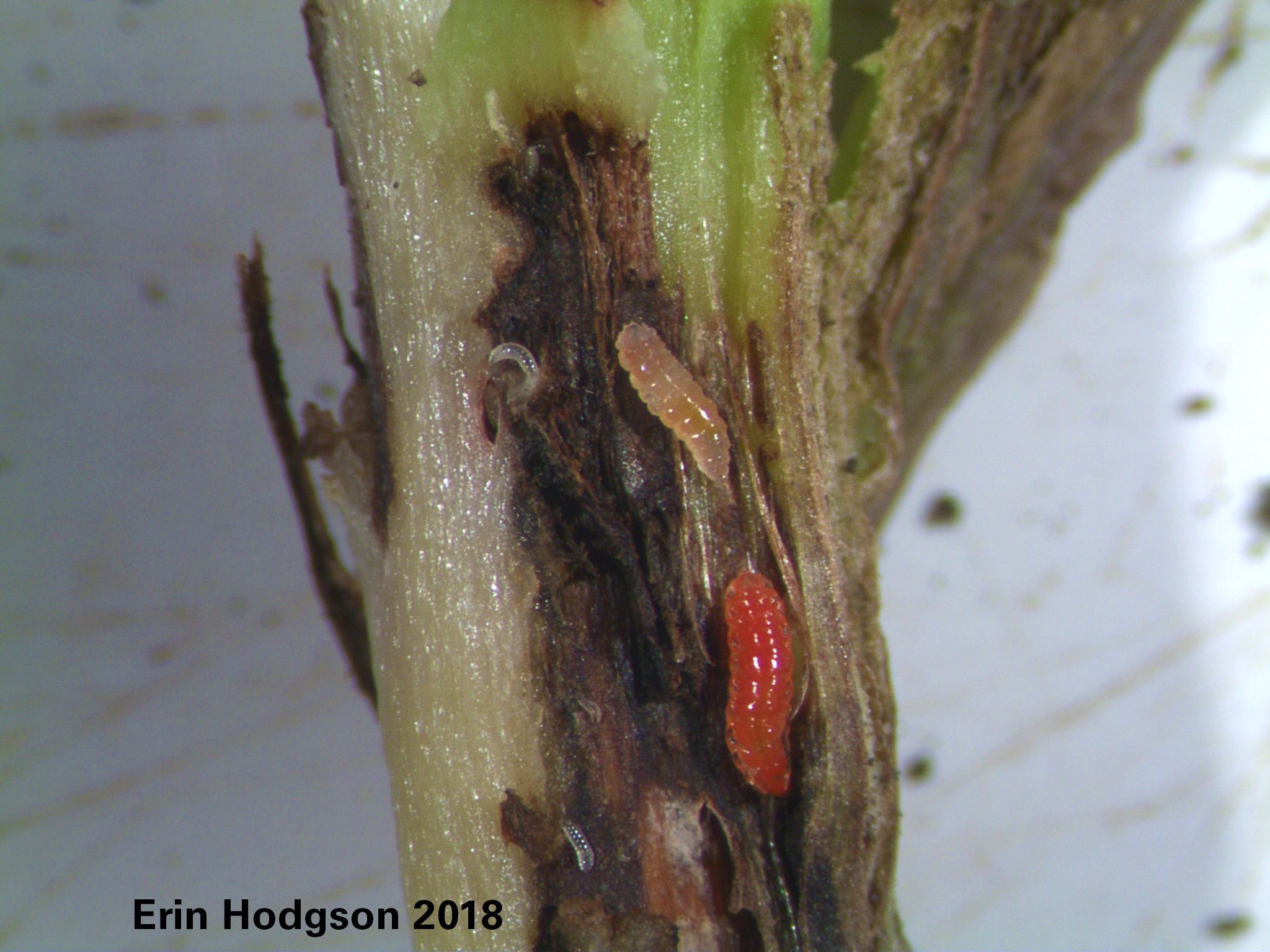
Soybean gall midge was detected last week in O'Brien and Sac Counties. Farmers in the western to northwestern part of the state should be on alert and scout for feeding. (Photo: Erin Hodgson, Iowa State University)
Be on alert for potential threats of soybean pests
June 23, 2022 | Kriss Nelson
While farmers are focusing on post-emergence herbicide applications and side-dressing nitrogen in corn, there have been reports of pests moving into soybean fields.
Dan Erickson, Iowa Soybean Association (ISA) farmer-member from Remsen in Plymouth County, is on high alert for a possible soybean gall midge infestation, following reports of sightings in the state.
According to the Soybean Gall Midge Alert Network, the pest was located near Wall Lake in Sac County and Sutherland in O’Brien County last week.
Alex Schaffer, ISA field program services manager, says farmers in the western and northwest parts of the state should be scouting for soybean gall midge.
“Farmers should scout the edge of fields first, especially next to where soybeans were planted last year,” says Schaffer. “If they see unhealthy plants among other healthy plants with a lesion at the base, they should scrape back the epidermis and look for maggots.”
The maggots will be white or orange, depending on their developmental stage.
Erickson’s first experience with soybean gall midge was three years ago. After mowing grass bordering a soybean field, he noticed the first 45 feet of soybeans had been cut to the ground as well as another soybean field.
The pest has since caused extensive damage to Erickson’s soybean, causing him to take radical steps to avoid further devastation.
“I have taken fields out of the soybean rotation, planting corn-on-corn or alfalfa,” he says. “Until someone comes up with an option to treat soybean gall midge, I will avoid planting soybeans to get nothing out of it.”
With some of his corn-on-corn acres needing to return to soybeans next year, Erickson is being proactive in his defense against soybean gall midge.
“If I have to border all of my soybean fields with alfalfa, I would be willing to do that, as long as it (soybean gall midge) doesn’t move in from the neighbors,” he says. “I can at least bale the alfalfa; it’s not a zero loss on those acres.”
Soybean aphids
Schaffer says he has heard reports of soybean aphids making a presence in fields near the Ames area. Although it may be too early to spray, Schaffer recommends starting scouting now and determine a plan if significant aphid pressure becomes present.
“I believe it would be extremely rare to require any control of aphids at this point,” he says. “If you see them on the edges of fields during this time of year, it is something to put on your radar for later in the season when it becomes more economically relevant during the reproductive phase of soybean plant development.”
Places of particular importance to scout for soybean aphids are the edge of fields around groves of trees and near buckthorn weeds where the pest tends to overwinter.
Typically, the time to treat for soybean aphids is in the R1 to R6 stages.
To justify an application, the economic threshold to consider spraying a foliar insecticide is when the average number of aphids exceeds 250 per plant, populations are increasing, and most plants are infested.
“Reproduction is greatest between 70 and 85 degrees, so aphids don’t like the heat,” says Schaffer. “But, it’s good to be aware because populations can double in a couple of days if conditions are right.”
Back